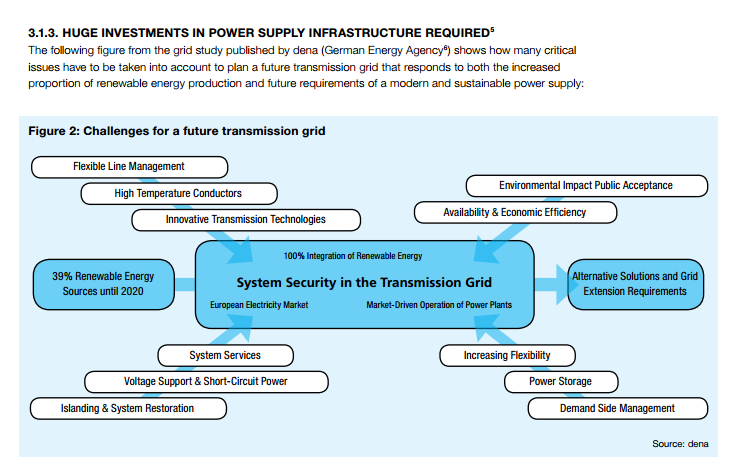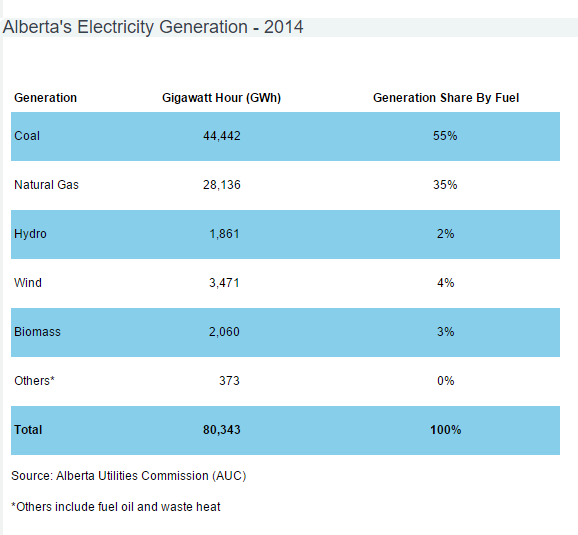Contributed by Rob Pearce @ March 2016
This is a rebuttal to the Pembina Institute article “The sun doesn’t always shine? No problem for renewables” by Sara Hastings-Simon on their blog dated March 16, 2016. The article itself is stated to be refuting comments made by Robin Campbell, President of the Coal Association of Canada regarding the poor reliability of wind and solar power.
It is a shame really, when one needs to challenge an author with a PhD in physics on her assessment of the long-established and very well understood physical process of generating electrical energy. It is in part why this article is titled “After Math”; once you get the math wrong, the errors are borne by the taxpayers and ratepayers, particularly the poor.
Let’s start with her opening few paragraphs, which describe the merits of a diverse grid in providing secure, reliable power, implying that somehow wind power provides that diversity and security. This is simply not true; in fact, it is wind power which is unstable and unreliable and requires backup by hydro and, yes, reliable, low-cost and long life fossil fuel energy. She talks of a “complete misunderstanding of our electricity system”, which is true. Unfortunately it is her misunderstanding. And more unfortunately, that misunderstanding is being deliberately propagated by misinformation such as this article.

Allianz Insurance notes that huge investments in the power supply infrastructure are required to put unreliable, intermittent wind and solar on the grid. These do not result in a beneficial increase in power but are required to manage and reduce the risk of grid black-out.
For example, she states “changes in wind or solar energy energy can be easier for grid operators to manage as they can be predicted quite accurately through weather forecasting”. So three things about this statement. One, for those readers who live in the real world, stop laughing and wipe the tears from your eyes. Two, has she actually checked with grid operators about the immense challenges of managing to maintain a stable grid with variable, unreliable energy from wind and solar? And three, anyone living in the real world is aware that weather forecasting is an enormous challenge, to say the least. Don’t we have a saying in Alberta: “If you don’t like the weather, just wait a minute”? Simply look at the data freely available on various websites, including the AESO (Alberta Electric System Operator), where charts show wind power regularly (actually, irregularly) varying wildly by 500-1,000 MW over periods of a few hours to a couple of days.

AESO – Screenshot taken Dec 29, 2015 shows Total Net Generation of wind in Alberta of 128 Megawatts out of a possible 1,463. Coal is doing all the heavy-lifting followed by Natural Gas.
In the five years from 2010-2014, wind capacity factor during annual peak demand varied from 0.0% (not a typo – nil) to 50%, with an average of about 14%. In four of the five years, it was less than 14%. In other words, it cannot be counted on at any time, let alone when needed the most. Yet we don’t see that variability because we have highly skilled and dedicated operators and, as importantly, reliable fossil fueled generation to back them (and us) up.

She mentions casually that coal plants are designed to run about 80% of the time, implying that this is a low level of reliability, putting consumers at risk of sudden blackouts. In fact, the system operates at very high levels of reliability. When was the last time you suffered a blackout and for how long? Perhaps a few minutes or maybe a few hours, at most. And probably due to a local event, such as a downed tree, rather than a system-wide interruption. The reason for high reliability is the fundamental nature of the vast majority of our generating fleet: natural gas and coal. Yes, plants are taken offline for maintenance; these events are typically planned and scheduled months and even years in advance, whereas wind or solar power fluctuate by the minute. There is simply no forecasting system on the planet capable of replicating the reliability and resulting economy of fossil fuel energy.

Blackouts are a threat from renewables, raising insurance rates as power surges can seriously damage equipment and put people’s lives at risk.


Excerpt of Allianz Insurance document showing “increased vulnerability due to wind and solar power” as an insurance risk. (See more below)
Ms. Hastings-Simon mentions: “the types of renewables that can be turned on, on command”. I am curious about these types of generation and wish that she would share what they are. Certainly wind power cannot be commanded to turn on if the wind is not blowing, and solar, well you get the idea.
Speaking of commanding, she comments on the high capabilities of grid operators, while implying that they like having renewables as part of their generating portfolio. They are extremely capable; however, the author neglects to point out that many have expressed grave concerns about the stresses and costs imposed upon our reliable, efficient grids (and passed through to us, the owners and users) by adding unreliable, low-quality renewable energy.

AESO reported years ago that ‘wind needs conventional generation as backup” and that “wind power and load do not correlate well.” (i.e. wind blows and produces power at times when there is low public demand for it). One of our previous blog postings discusses the challenges of wind-hydro and related costs and why a national wind-hydro grid is technically infeasible and even if possible, undesirable.
Ms. Hastings-Simon’s closing statements imply that investment in renewables is growing implying it is a good investment because it’s so good when in fact it’s growing (slightly) because it has been mandated into being. The lousy economics of renewables are subsidized by ratepayers and taxpayers around the globe. She states renewable investment was up 4% in 2015 compared to 2014. Answer me this, if with all the subsidies and mandates renewables require and enjoy, and if it’s so damn good, why was it up only 4%? At that rate, it may never catch up to simple replacement, let alone global growth, in the real generation business.
In closing, it is sad that it is necessary and takes this long to rebut such a willfully simplistic and misleading article as that written for and published by the Pembina Institute. From rationalwiki.org, and attributed to Alberto Brandolini: “The amount of energy necessary to refute bullshit is is an order of magnitude bigger than to produce it”.
~~~

How lack of power following a catastrophic grid black-out
would affect a region or nation simply in terms of access to pumped water.

In Melbourne Australia we have a saying “”the city were you can experience the four seasons in one day” so they we ill be right for one or the other at any part of b the day 🙂
And shame on anyone affiliated with the Pembina Institute!!!
Right on…. Trevor…. I have seen time and time again, a tremendous amount of erroneous information and hyperbole coming from this agency. And yet the City of Calgary mayor hired them for a city Solar project a few years back at a considerable cost, in lieu of using the City
s own Engineering department. We have implemented hundreds of PV solar systems across the southern part of the province for remote well site RTU power….. and know when to implement them and when not….. Pembina does not know their azz from a hole in the ground…
The first diagram in this article has a tag indicating “high temperature conductors”….. God help us all! That makes absolutely no sense whatsoever…… Didn’t we cover these basics back in high school science? High temperature increases electrical resistance driving up energy consumption before it arrives at the intended electrical load……
The diagram is from an Allianz report on blackout risk. http://www.agcs.allianz.com/assets/PDFs/Special%20and%20stand-alone%20articles/Power_Blackout_Risks.pdf
I seriously question her academic credentials. Her diploma came from an online ” school”? Just asking.